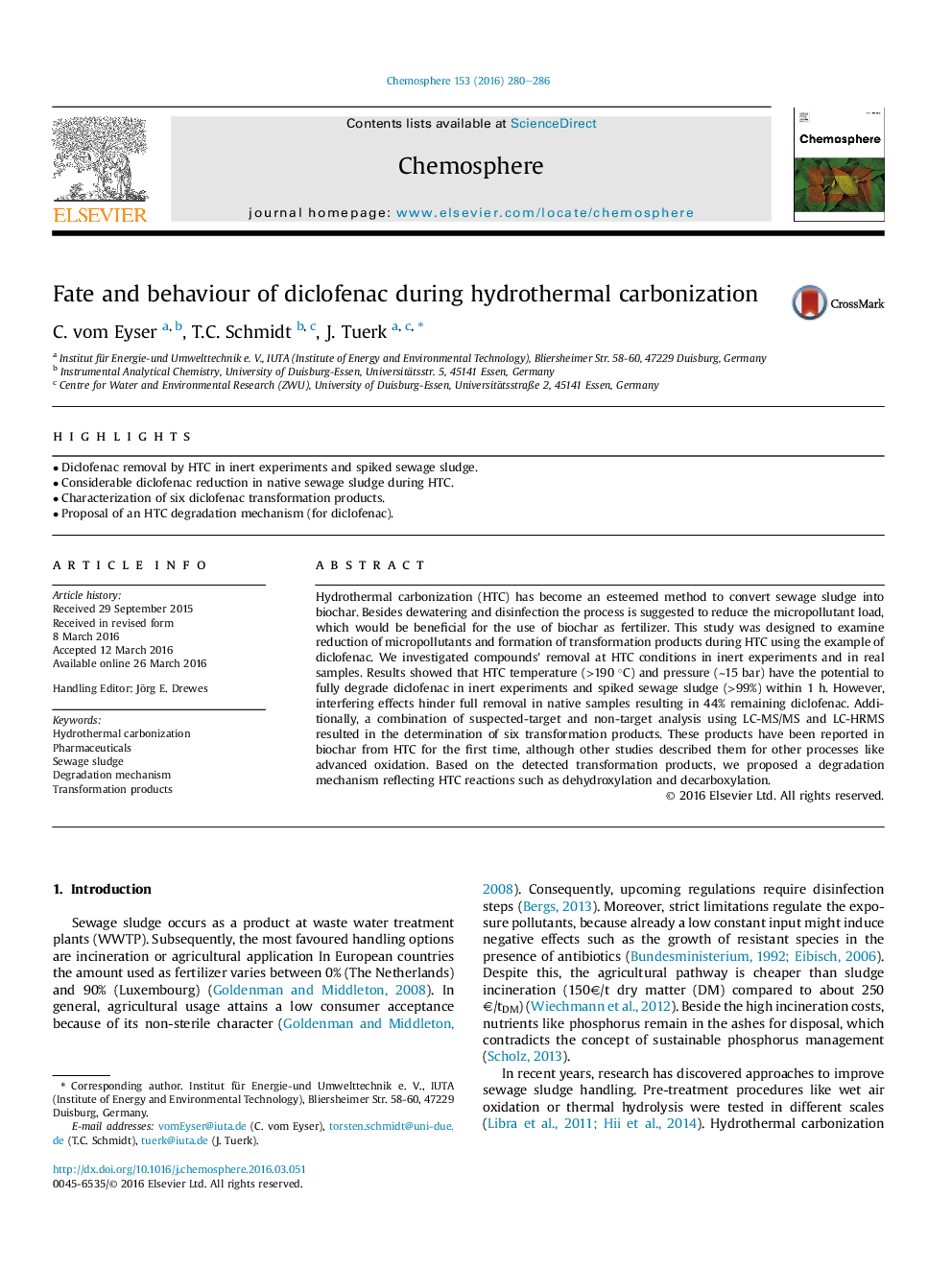| کد مقاله | کد نشریه | سال انتشار | مقاله انگلیسی | نسخه تمام متن |
|---|---|---|---|---|
| 4407676 | 1618818 | 2016 | 7 صفحه PDF | دانلود رایگان |
• Diclofenac removal by HTC in inert experiments and spiked sewage sludge.
• Considerable diclofenac reduction in native sewage sludge during HTC.
• Characterization of six diclofenac transformation products.
• Proposal of an HTC degradation mechanism (for diclofenac).
Hydrothermal carbonization (HTC) has become an esteemed method to convert sewage sludge into biochar. Besides dewatering and disinfection the process is suggested to reduce the micropollutant load, which would be beneficial for the use of biochar as fertilizer. This study was designed to examine reduction of micropollutants and formation of transformation products during HTC using the example of diclofenac. We investigated compounds' removal at HTC conditions in inert experiments and in real samples. Results showed that HTC temperature (>190 °C) and pressure (∼15 bar) have the potential to fully degrade diclofenac in inert experiments and spiked sewage sludge (>99%) within 1 h. However, interfering effects hinder full removal in native samples resulting in 44% remaining diclofenac. Additionally, a combination of suspected-target and non-target analysis using LC-MS/MS and LC-HRMS resulted in the determination of six transformation products. These products have been reported in biochar from HTC for the first time, although other studies described them for other processes like advanced oxidation. Based on the detected transformation products, we proposed a degradation mechanism reflecting HTC reactions such as dehydroxylation and decarboxylation.
Journal: Chemosphere - Volume 153, June 2016, Pages 280–286
